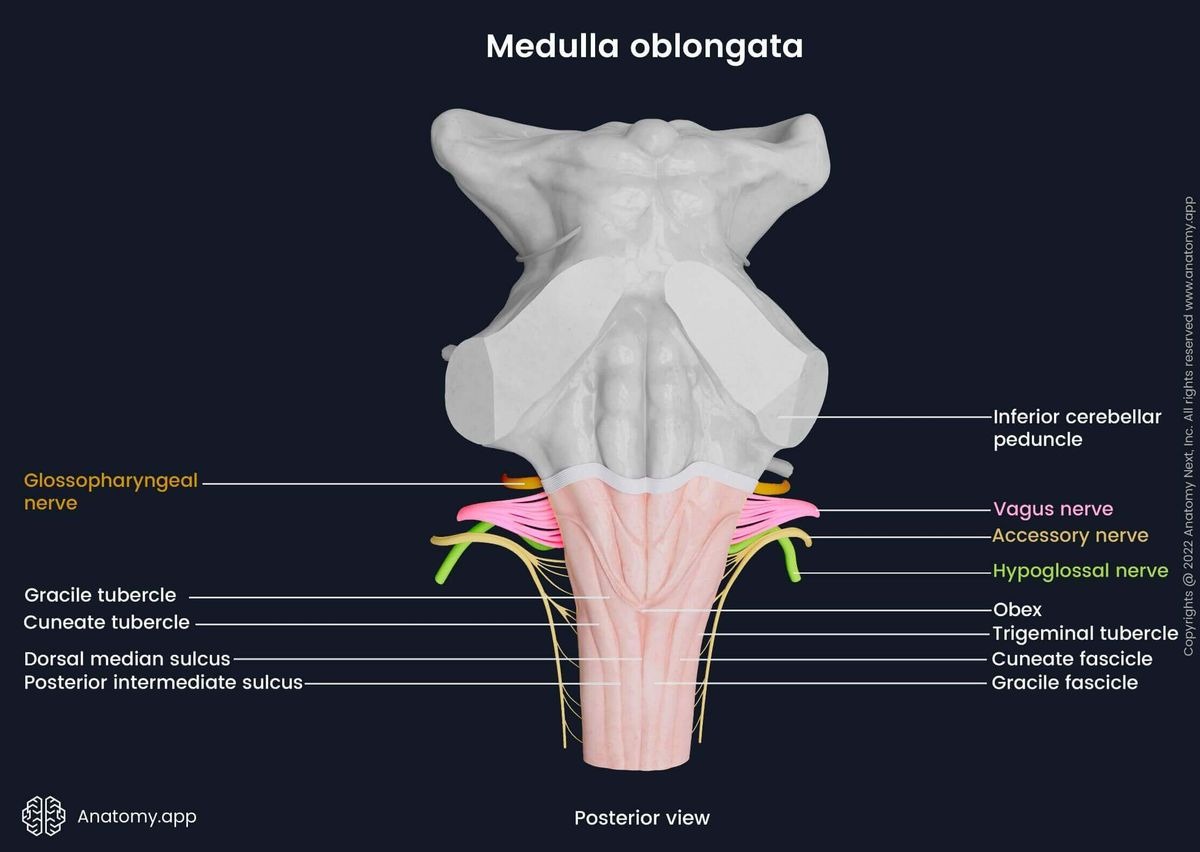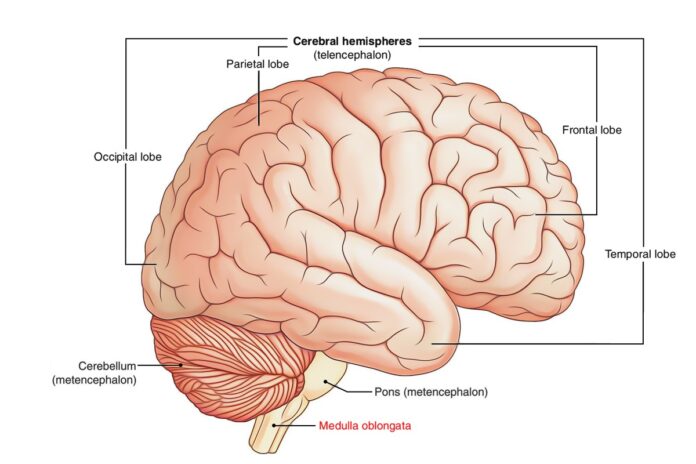The medulla oblongata is a part of the human brainstem, located at the lowest part of the brain, just above the spinal cord. It is responsible for several vital functions, including regulating heart rate, breathing, blood pressure, and various reflexes. In terms of its shape and anatomical features, the medulla oblongata is roughly cylindrical and conical in shape.
Here are some key characteristics of the medulla oblongata’s shape:
1. Conical Structure:
The medulla oblongata tapers as it descends from the pons (a higher part of the brainstem) towards the spinal cord. It forms the transition between the brainstem and the spinal cord.
2. Ventral and Dorsal Surfaces:
The medulla has both ventral (front) and dorsal (back) surfaces. The ventral surface contains important structures related to motor functions, while the dorsal surface contains structures related to sensory functions.
3. Grooves and Fissures:
Like other parts of the brain, the medulla oblongata has grooves and fissures that divide it into specific regions and help in identifying different nuclei and pathways within the structure.

4. Continuous with Spinal Cord:
The medulla oblongata is continuous with the spinal cord, meaning there is no clear boundary between them. It serves as a transition point where nerve fibers cross over from one side of the body to the other.
5. Location of Vital Centers:
Within the medulla oblongata, you can find vital centers such as the cardiac center (regulating heart rate), the respiratory center (controlling breathing), and centers that regulate blood pressure and various reflexes.
6. White and Gray Matter:
Like the rest of the central nervous system, the medulla oblongata contains both white matter (comprising nerve fibers) and gray matter (containing cell bodies of neurons). These are organized into nuclei that play specific roles in controlling various functions.
Overall, the medulla oblongata’s shape is essential for its role in connecting the brain to the spinal cord and controlling critical autonomic functions necessary for survival. Its anatomical features support its functions in regulating vital bodily processes. it often considers the shape of medulla oblongata like shivling.
also read :
Shivalingam : శివలింగం ఆకారం మెదడులోని ఈ భాగం వలె ఉంటుంది.. పనితీరు మరియు ప్రాముఖ్యతను తెలుసుకోండి
Why Shiva Lingam in that shape ? Key Reasons for it !!
Shivalingam shape : Do you know shivling is like this part in human body?
